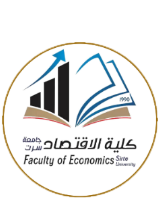Measuring the Readiness of Conventional Banks to Shift into Islamic Banks: A Case Study of the Commercial Banks in Libya
DOI:
https://doi.org/10.37375/esj.v2i4.2167Abstract
This paper aims to identify the readiness of conventional banks in Libya to shift into Islamic banks. It has discussed the readiness of a sample of six main traditional banks in Libya with respect to their experience of Islamic banking instruments, acceptance of managers, staff and bank customers for the idea of transforming their bank systems into the Islamic system, and also with regard to the internal bank regulations that can support the transformation into the Islamic system, and also with respect to the current computer system existing in banks and their readiness for the implementation of Islamic banking operations with respect to time and effort needed for bank’s transformation, and finally to the idea of Islamic bank’s possibility of providing Shariah supervisory board.
In this study, a questionnaire was developed in order to find out information and data related to the topic. Some statistical methods such as the weighted mean, standard deviation, ANOVA test, and Post Hoc test were used in order to discover the readiness level of conventional banks to shift into Islamic banks.
This study found that there was a statistically significant difference between some of the Libyan banks surveyed with relation to training of their staff on Islamic banking instruments. It also found that there was a statistically significant difference in the internal regulations for supporting the idea of transforming into Islamic banks.
References
• Akbar, S., Shah, S. Z. A., Kalmadi, S (2012) An investigation of user perceptions of Islamic banking practices in the United Kingdom, International Journal of Islamic and Middle Eastern Finance and Management, Vol. 5 No. 4, pp. 353-370.
• Al Nasser, S. A. S and Muhammed, D. D. J (2013) Introduction to history of Islamic banking in Malaysia, Humanomics, Vol. 29 No. 2, pp. 80-87.
• Beseiso, F. H (2014) Central Banks’ Role in Shaping the Future of Islamic Banking, the Developing Role of Islamic Banking and Finance: From Local to Global Perspectives Contemporary Studies in Economic and Financial Analysis, Volume 95, 3-30.
• Butt, I., Saleem, N., Ahmed H., Altaf, M., Jaffer, K., Mahmood, J (2011) Barriers to adoption of Islamic banking in Pakistan, Journal of Islamic Marketing, Vol. 2 No. 3, pp. 259-273.
• Dusuki , A. W (2008) International Journal of Islamic and Middle Eastern Finance and Management, Vol. 1 No. 2, pp. 132-148.
• Faye, I,. Triki, T, and Kangoye, T., The Islamic finance promises: Evidence from Africa, Review of Development Finance 3 (2013) 136–151.
• Gait, A.H., 2009. Libyan Attitudes towards Islamic Methods of Finance: An Empirical Analysis of Retail Consumers, Business Firms and Banks. Griffith University (PhD dissertation.)
• Sekaran, U. (2003) Research Methods for Business: A Skill Building Approach, 4th edition, John Wiley, New York.
• Sufian, F (2007) The efficiency of Islamic banking industry in Malaysia For




































